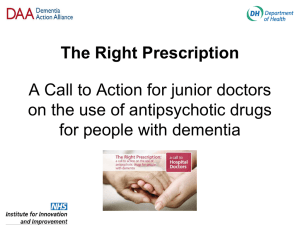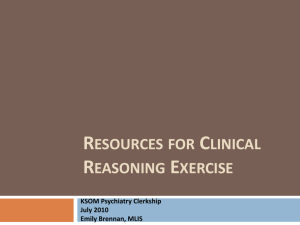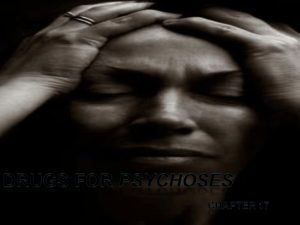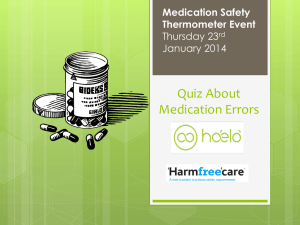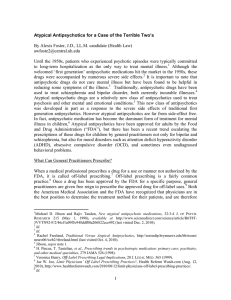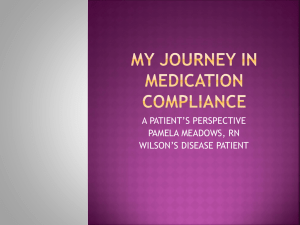Workshop 1 - Thompson - Pal-Tech
advertisement
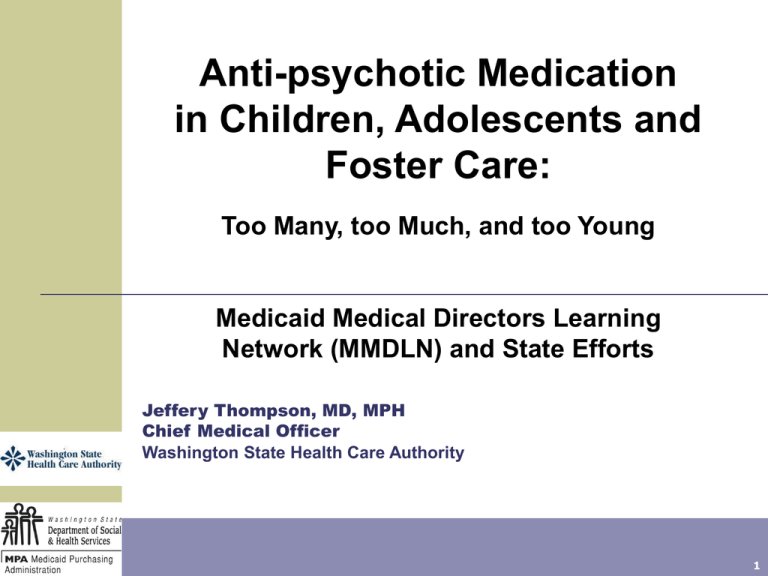
Anti-psychotic Medication in Children, Adolescents and Foster Care: Too Many, too Much, and too Young Medicaid Medical Directors Learning Network (MMDLN) and State Efforts Jeffery Thompson, MD, MPH Chief Medical Officer Washington State Health Care Authority 1 Discuss How States are Working Toward Access to Quality Affordable Care 1) Discuss How States Turn data into Information 2) Discuss the 16 State Study 3) Discuss the Resource Guide 4) Discuss the MedNet – a 7 State Study with Rutgers 5) Next Steps 2 The Problem Statement: Unexplained Variation is an Issue 2004 regional variation in clients using four or more mental health drugs by county; WA decided to do something 3 Variation Drives Health Care Costs: Lack of Medication Adherence appears to Drive Hospitalizations and ER use Antipsychotic Adherence Relationship between length of time gap since exhausting last refill and outcomes over the next 6 months Community Psych IP Admissions ED Visits Medical Inpatient Admissions Per 1,000 Member Months Per 1,000 Member Months Per 1,000 Member Months 313 61 37 188 38 23 156 16 14 No Gap 0 Days Short Gap 1-16 Days POSSESSION RATIO ANALYSIS Medical Assistance Cost PMPM Long Gap 17+ Days No Gap 0 Days GROUP 1 | Bottom 50% Short Gap 1-16 Days Long Gap 17+ Days GROUP 2 No Gap 0 Days | 50th – 80th Percentile Short Gap 1-16 Days GROUP 3 Long Gap 17+ Days | Top 20 Percent Ratio < 1.22 Ratio 1.22 to 2.08 Ratio > 2.08 $1,100 $1,341 $1,753 4 How can States Work Together? In 2008 the MMDLN invited a small number of states to discuss anti-psychotic medication management and whether comparing systems and policies: An informal data-sharing agreement between 16 states to pull and share utilization and demographic data with Rutgers University A survey of state programs and practices to categorize policies, statutes, and utilization controls related to mental health medications A process to share state practices based on a systematic process (best, promising, emerging, and unknown) A publication committee made up of State Medical and Mental Health Directors to write a Resource Guide 5 Antipsychotic Medication Use in Children and Adolescents in 16 States and 12 million children: 50% 45% 40% 35% 30% 25% 20% 15% 10% 5% 0% Every State had a great data point and a wart! Min (%) Median (%) Max (%) Data are not risk adjusted for population composition thus statistical comparisons were not possible 6 What’s in Your Rate? Percent of Children Using APs Each State Received a Feedback Report 4.5 4 3.5 3 2.5 2 1.5 1 0.5 0 2004 Washington 2005 Minimum 2006 2007 Mean Maximum 7 States that appeared to have lower rates on specific measures and could be consulted include: MO, MA, PN and TN had lower gaps in care IL, WA, and NY had lower overall AP use rates CA, NY, and OR had lower AP use rates in children <5 years OR, ME, and OK had lower high dose rates of APs NH, WA, AL had lower multiple use rates of APs (>2 APs) OR, WA, and IL had lower multiple use rates of Mental Health Drugs (>4MHDs) MO, TN ,and ME had lower gap in days of APs (>20 days of Gap) OR, CA, and WA had lower foster care use rates of APs 8 Antipsychotic use: Key Findings and Outcomes Washington State Department of Social & Health Services http://rci.rutgers.edu/~cseap/MMDLNAPKIDS.html. 9 Antipsychotic use: Key Findings and Outcomes Washington State Department of Social & Health Services http://rci.rutgers.edu/~cseap/MMDLNAPKIDS.html. 10 What is a Best Practice? 11 Antipsychotic Medication Use in Children and Adolescents: A Resource Guide and Workbook http://rci.rutgers.edu/~cseap/MMDLNAPKIDS.html. 12 Antipsychotic Medication Use in Children and Adolescents: A Resource Guide and Workbook http://rci.rutgers.edu/~cseap/MMDLNAPKIDS.html. 13 Second opinions work to reduce misuse and overuse of drugs 14 Numbers for Washington State Executive Summary: CY2007 • Total users: 4,978 (1.4%) of enrolled kids used an Antipsychotic (dropping on a monthly basis through January 2010) • Growth trends: Antipsychotic users grew 25% and unit costs grew 38% from 2004 to 2007 • Antipsychotic use in the very young: 187 AP users are less than 5 years old • High dose: 499 (10%) of users are prescribed high doses of Antipsychotics • Multiple AP use: 896 (19%) of users had two or more Antipsychotic prescriptions 15 Numbers for Washington State Executive summary: CY2007 (Cont.) • Multiple Mental Health Drug use: 621 (2.3%) of kids are prescribed 5 or more mental health drugs • Adherence: 1,588 (39%) had a gap in Antipsychotic use of greater than 20 days • Provider types: Antipsychotics were prescribed by Psychiatrists (45%), PCP (34%) and ARNP (21%) Multiple Mental Health Drug use: 621 (2.3%) of kids are prescribed 5 or more mental health drugs • • Adherence: 1,588 (39%) had a gap in Antipsychotic use of greater than 20 days • Provider types: Antipsychotics were prescribed by Psychiatrists (45%), PCP (34%) and ARNP (21%) 16 PAL’s web resources highly utilized (>300,000 hits) 17 Other Aspects of PAL Services • Free psychiatric education conferences hosted minimum of 4 times a year in our rural communities – 656 PCP attendees at 28 educational events • Free, expert reviewed care guideline – Distributed to over 2,000 WA physicians – Downloaded over 10,000 times • Quarterly consult audits to ensure evidence based advice is consistent with the care guide 18 MedNet– A Seven State Collaborative Collaborative to ensure that resources are maximized and that outcomes and indicators are consistent Feedback : with Predictive Health Polypharmacy, Dose, Adherence, Generics ER, Rehospitalizations Tools: Educational materials for Providers Medication Adherence, Reducing Rehospitalizations & Avoidable ER Use Sharing: Best Practices are shared across clinics in the collaborative Measure Improvements: All providers are receiving feedback reports, outlier prescribers are having Peer-to- Peer conversations 19 19 How do we get better? 20 Is there Too Much Variation in Care? Less variation with application of data and asking why? 2007 2011 21 How do we ensure children are given the right treatment at the right time for the right reason? Questions? Jeff Thompson, MD, MPH Chief Medical Officer Washington State Health Care Authority 360-725-1612 Jeffery.thompson@hca.wa.gov 22

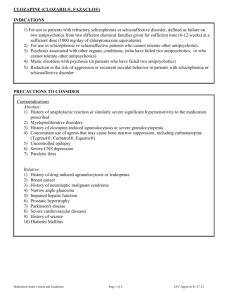
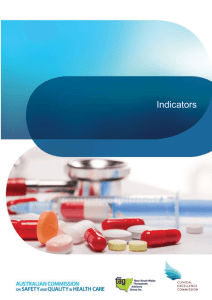
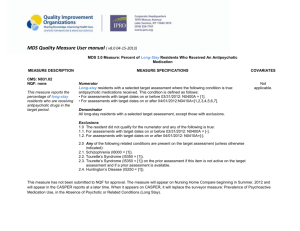
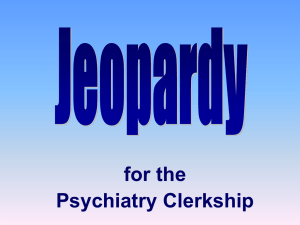
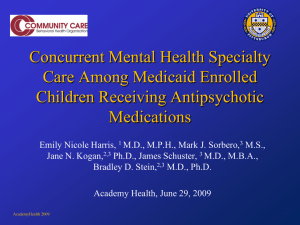
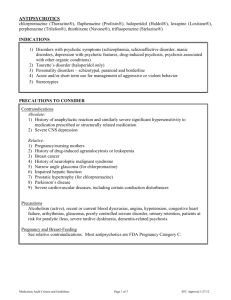
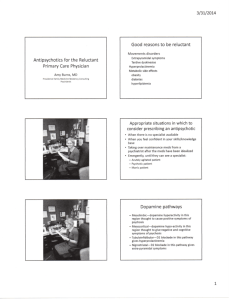

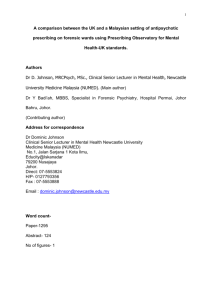
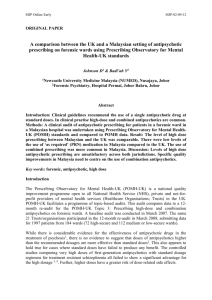
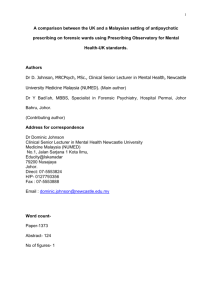
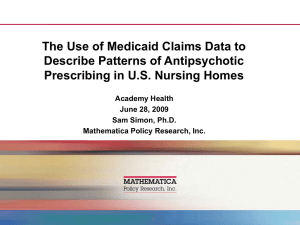
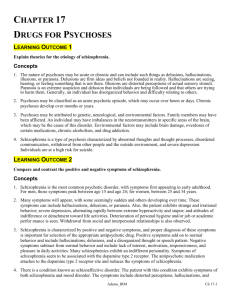
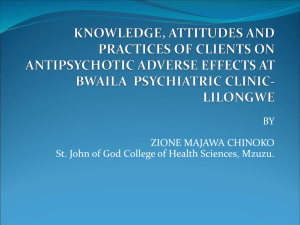
![UW2 - Psychiatric Drugs [2014]](http://s3.studylib.net/store/data/006942877_1-1e1312ddbd9872da620b90364eb238c8-300x300.png)
